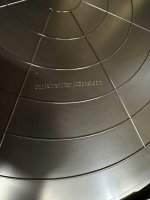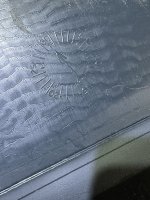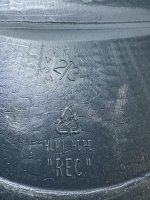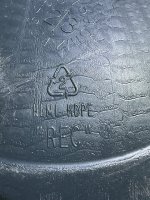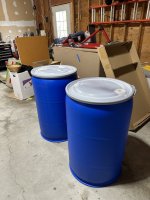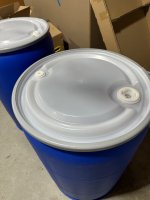I don't believe that's accurate. Rec means it's recyclable plastic. The black is reinforced.They are stiffer than the blue ones.
Here is something I found online....
Black MDPE vs Blue MDPE - what's the difference?
Under BS EN 12201 plain black MDPE is used for above ground drinking water (potable) systems, whereas blue MDPE is used for drinking water systems below ground. Pushfit compression fittings are typically used in this application for sizes 20-63mm, and electrofusion fittings for larger diameters.
Under EN 13244 black HDPE can be used for industrial water systems as well as sewage pump mains - although in these applications you would typically use black HDPE with brown stripes. Only use electrofusion or butt fusion jointing methods in this application.
MDPE or HDPE - what material is used?
The polyethylene material used to manufacture black MDPE is actually high density polypropylene; technically the product is named black HDPE but the market and industry still refer to this product as black MDPE. The change was made to improve product quality with tough PE100 material, as black HDPE can be used for both drinking and industrial water supplies, while still being compatible with pushfit compression fittings as well as electrofusion and butt fusion joining methods.
It is not prone to rot, corrosion, or stress cracking making it suitable for the above ground conditions you would expect. Also available in sizes 20-63mm in coils of 25m, 50m 100m and 150m.
Just like blue MDPE the term black alkathene is known but not often used, and relates to the commercial name of polyethylene back in the early 20th century; black alkathene and black MDPE have been replaced with black HDPE.



